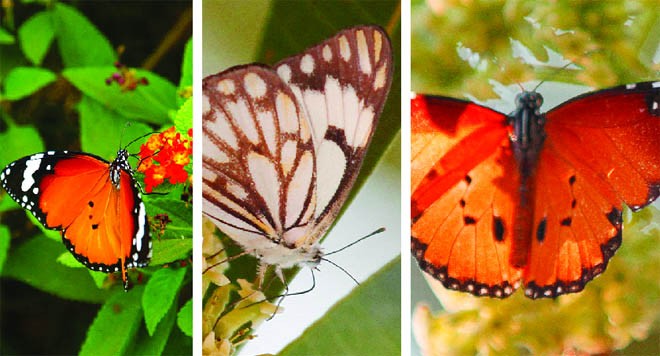
Lahore braces for a Butterfly House in an 80-acre botanical garden, with countless rare species of butterflies to mingle with

Imagine a garden filled with butterflies, hundreds of them, showing off the intricate colourful patterns on their wings while basking in the sunshine, perched on a rose petal, and then twirling in aerial dogfights, just before soaring into the sky, only to return some time soon… for many among us this would be that ‘heart sink’ moment. Oh, just imagine!
But, when was the last time you were captivated, charmed by a butterfly?
The sad news is that the population of butterflies is on decline. It has become rare to come across one in private gardens or public parks. The young generation has perhaps seen them only in textbooks or in cartoon series, movies and documentaries.
Entomologists and environmentalists claim that butterflies are sensitive species and cannot survive in high temperatures, polluted environments and places with excessive human activity. They need a little moisture in the air and extreme exposure to smoke and dust can be lethal for their survival.
So, the reason why they do not flutter around us anymore is quite clear.
However, there is good news for people of Lahore and those visiting the city from the other parts of the country and abroad. They will soon be able to spot thousands of butterflies at one place - at the Butterfly House to open in the botanical gardens close to the Jallo Wildlife Park by October this year.
Parks and Horticulture Authority (PHA) spokesman Javed Shaida says, the authority is developing this botanical garden, spread over 88 acres, on international standards -- and has planted around 1,000 species of plants, of which around 400 are imported.
The Butterfly House, he says, "will be an added attraction and will give people quality entertainment".
The news about this development has evoked immense interest among people though some of them question the logic of setting it up so far away from the city centre. "It would be difficult for me and friends to go to Jallo to see these beautiful creatures. Public transport service is not good and rickshaw drivers are not willing to take passengers there," says Asifa Ahmed, a first year student.
The Authority officials have an explanation ready to justify the location of the park. Yawar Husain, Additional Director General PHA, says that ideal temperature for butterflies is between 20 to 30 degrees Celsius and they need some moisture to survive and breed - "The Butterfly House will host a limited number of butterflies and those in excess will be released in the botanical garden spread over 80 acres. Such an environment cannot be provided to them in the crowded city center."
He adds, PHA is developing a structure measuring 60x300x30 feet. There will be 10 feet high brick walls with poly-carbonated sheets mounted on them. The purpose of using this sheet is that it will allow the required amount of light to come in. A walkway will run through the place. The total cost of the project is around Rs50 million and there will be both local as well as imported species of butterflies. The contract for pupas has been given to a contractor who will import them from Thailand.
Husain says the required temperatures will be ensured through air-conditioning, and the moisture level will also be maintained. If the required moisture is not maintained, the wings of butterflies may become brittle and break.
He says though the PHA DG Mian Shakeel Ahmed has immense interest in butterflies and the project is his brainchild, the authority will be hiring entomologists and specialists to look after the butterfly park on professional grounds.
PHA officials shared some interesting facts about the project, for example, it was learnt that many species of adult butterfly live for only two to three weeks and those who can live up to three months or more are rare. So, it is quite likely that a visitor will not be able to spot the same butterfly again on his next visit.
This also means that the management will have to have a regular supply of new generation of butterflies to keep the house full.
The Authority has plans in this regard as well, says Yawar, adding that the staff will remove eggs from the butterfly house and take them to a special room where these will be kept in controlled environment. The pupas and larvae will develop here and the butterflies emerging from them will be moved to the butterfly house as well as freed in the botanical garden. There will be a special area where visitors, especially school children, will be educated on the lifecycle of a butterfly through introductory lectures, documentaries and demonstrations.
The focus of the project is on bringing in butterflies with high aesthetic value, breeding of local species, preferring those foreign species which can adapt to local conditions easily and making the initiative sustainable, Yawar concludes.